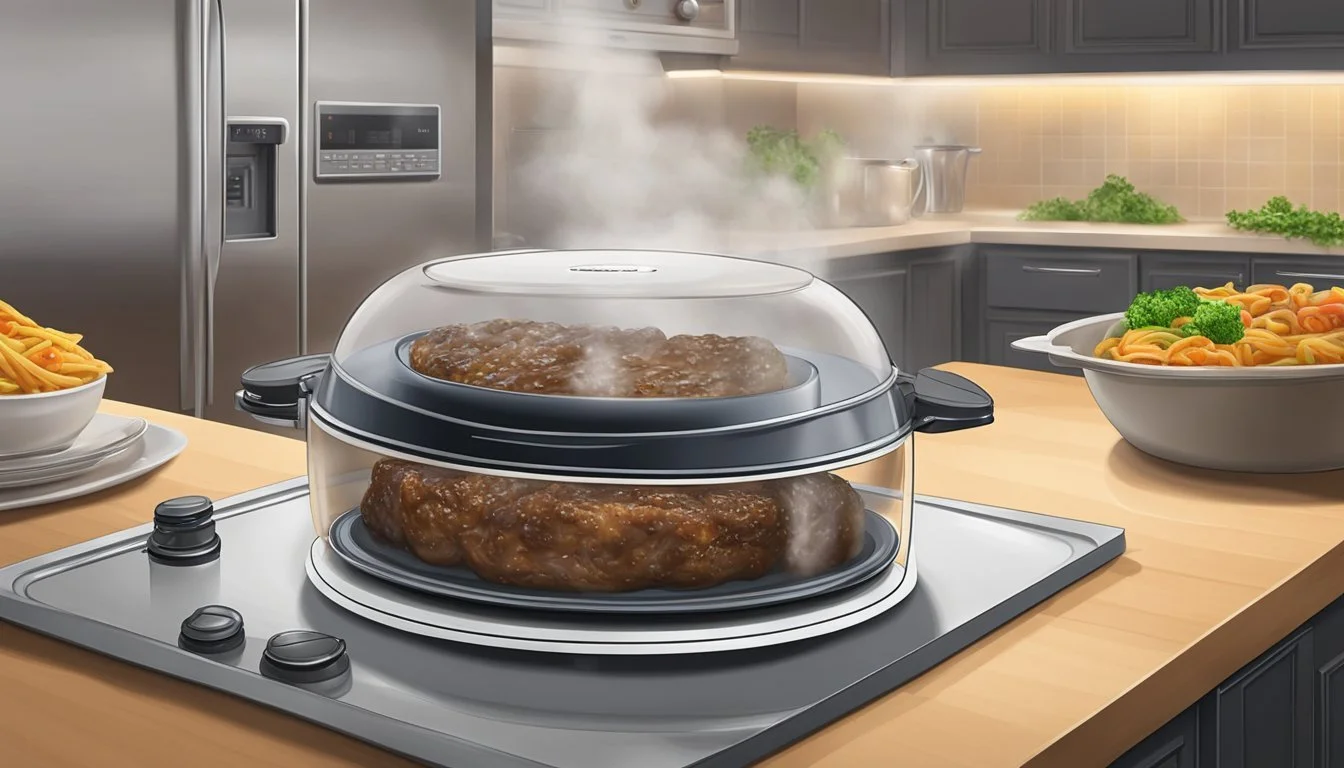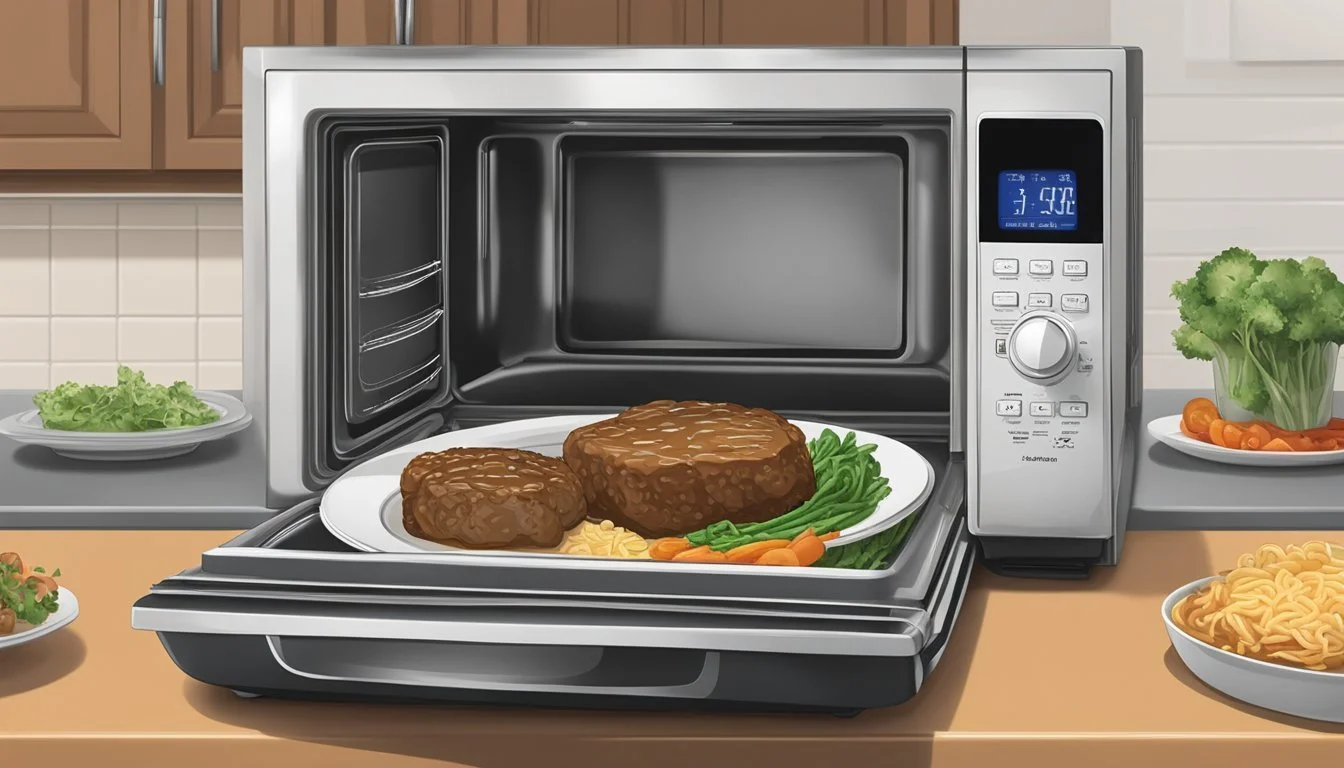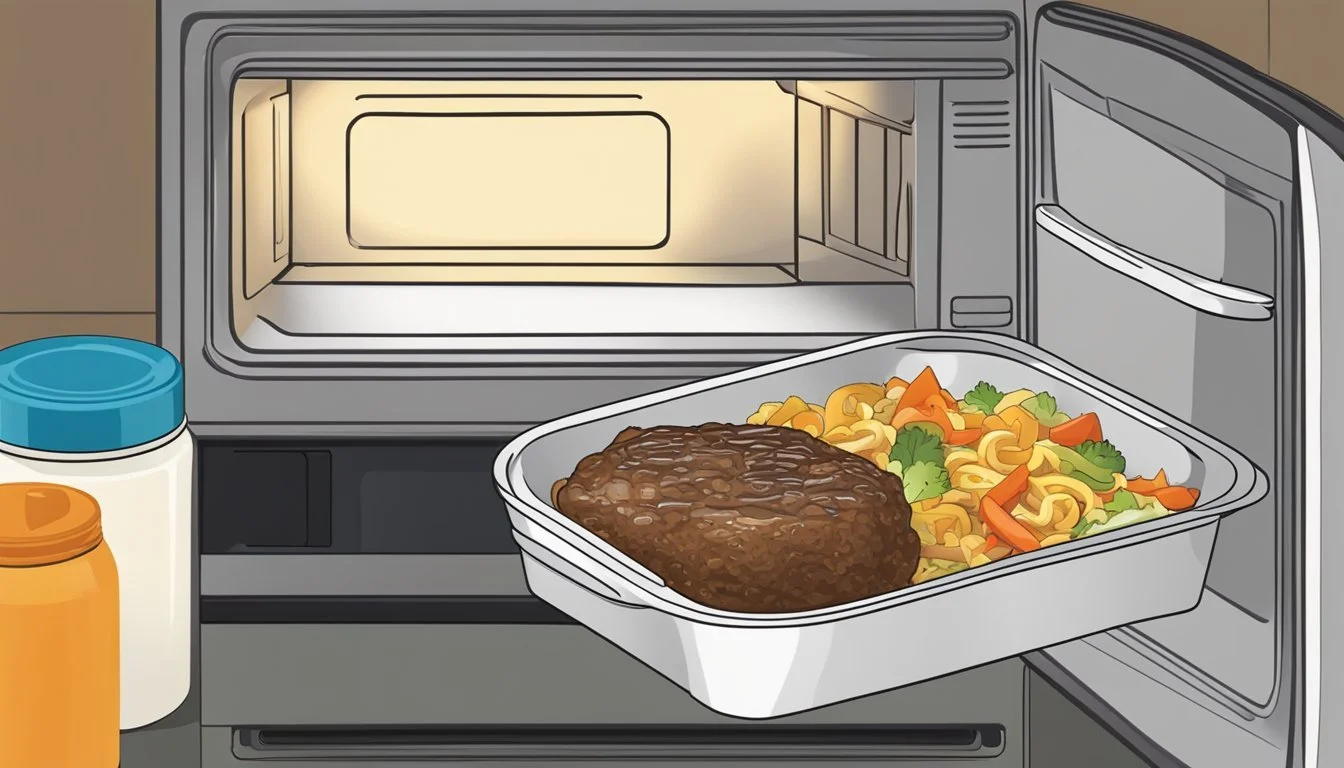How to Reheat Banquet Salisbury Steak Meal for Best Results
There's nothing quite like a comforting Banquet Salisbury Steak meal for dinner, but reheating it properly can be the difference between a dry, bland dish and one that's rich and flavorful. To reheat your Banquet Salisbury Steak meal, preheat the oven to 375 degrees Fahrenheit and place the meal on a cookie sheet in the oven. This process helps to maintain the steak’s moisture and flavor without the risk of overcooking.
Using the oven isn’t the only way to bring your Salisbury steak back to life. If you're short on time, microwaving with a little care also works. After microwaving, let the steaks rest to allow the juices to redistribute, enhancing flavor and maintaining tenderness.
For those who prefer stovetop methods, adding a splash of beef broth can reintroduce moisture and keep the flavors intact. This versatile approach ensures your meal remains delicious whether you're heating it up quickly or taking your time.
Understanding Salisbury Steak
Salisbury steak, a classic American comfort food, features a seasoned ground beef patty. It typically contains beef, breadcrumbs, onions, eggs, and seasonings like salt and pepper. A key ingredient often included is Worcestershire sauce, which adds an umami flavor.
Gravy is an essential component, usually made from beef broth, onions, and mushrooms. This rich, savory topping enhances the dish's flavor and moisture.
The nutritional value varies based on ingredients and preparation. Beef provides protein, while onions and eggs offer vitamins and minerals. However, traditional recipes can be high in calories and sodium.
Salisbury steak is a versatile dish. It can be prepared on the stovetop or baked in the oven. Each method aims to achieve a tender patty with a deliciously browned exterior.
Here is a simple breakdown of common Salisbury steak ingredients:
Ingredient Type Ground Beef Protein Breadcrumbs Binder Onions Flavor and Texture Eggs Binder Worcestershire Sauce Umami-enhancer Salt and Pepper Seasoning Gravy (Beef Broth, Onions, Mushrooms) Topping
Salisbury steak offers a comforting, familiar meal that combines the flavors of beef and rich gravy.
Preparation for Reheating
Preparing to reheat a Banquet Salisbury Steak meal involves handling and storing it properly, along with essential safety considerations.
Handling and Storage
Before reheating, ensure the Salisbury steak meal is stored correctly. If unopened, you can keep it in the freezer until needed. Once opened, transfer any remaining portions to an airtight container or wrap them tightly in aluminum foil to maintain freshness. Store the container in the fridge if you plan to reheat within a few days. For longer storage, freeze the meal.
Check the product information for specific freezing instructions. Frozen meals should be reheated directly from the freezer, while refrigerated meals require less heating time. Keeping track of the storage time is crucial, as prolonged storage may affect the meal's quality and safety.
Safety Considerations
Food safety is paramount when reheating meals. Ensure the Salisbury steak reaches a safe internal temperature of 165°F (74°C) to kill any harmful bacteria. Use a food thermometer to check this temperature accurately.
Avoid reheating the meal multiple times, as this increases the risk of bacteria growth. When heating in the microwave, follow the instructions specifically tailored to the microwave’s power settings to ensure even heating. Also, never use the microwave if the foil is still on the meal, as it poses a fire hazard.
Lastly, consult the smartlabel info for detailed reheating instructions and allergen information to ensure the meal suits your dietary requirements.
Reheating Methods
Each method for reheating a Banquet Salisbury Steak meal seeks to preserve the dish's flavor and texture. Whether using a microwave, oven, or skillet, proper techniques ensure a satisfying result.
Microwaving Salisbury Steak
Place the Salisbury steak on a microwave-safe dish. Cover it with a microwave-safe lid or another microwave-safe plate to trap moisture.
Heat on medium for 2–3 minutes. Rotate the dish halfway through to ensure even heating. Check the temperature; the steak should be reheated to an internal temperature of 165°F (74°C).
After microwaving, let the steak rest for 1–2 minutes before serving. This resting time allows the juices to redistribute, enhancing flavor and texture. If the meal includes gravy, ensure it is heated separately to avoid overcooking the steak.
Using the Oven
Preheat the oven to 325°F (163°C). Place the Salisbury steak in an oven-safe dish. Cover it tightly with aluminum foil to retain moisture. Add a small amount of beef broth if desired, which helps maintain the steak’s juiciness.
Heat in the oven for about 20–30 minutes. Check the temperature early to avoid overcooking. The goal is an internal temperature of 165°F (74°C).
Remove the dish from the oven carefully and let it rest for a few minutes before serving. This method may take longer than microwaving, but it can lead to better texture and evenly heated meat.
Skillet Reheating
Heat a skillet over medium-low heat. Add a small amount of oil or butter to prevent sticking.
Place the Salisbury steak in the skillet and cover with a lid. Heat gently, turning the steak occasionally, for about 10–15 minutes. Use a meat thermometer to check for an internal temperature of 165°F (74°C).
Add a splash of beef broth to the skillet if needed, which can help reintroduce moisture without diluting the steak’s flavor. This method helps maintain a good texture and enhances the flavor of the steak.
Sides and Accompaniments
Complementing a Banquet Salisbury Steak meal with the right sides can elevate the dining experience. Below are effective ways to pair your Salisbury steak with delicious and nutritious sides.
Mashed Potatoes
Mashed potatoes are a classic side that beautifully pairs with Salisbury steak. Their creamy texture and buttery flavor provide a lovely contrast to the savory steak and rich gravy.
Mashed potatoes can be enhanced by adding butter and a splash of cream for extra richness. For added nutrition, consider incorporating mashed cauliflower into the potatoes. This not only boosts the dish's fiber content but also adds essential vitamins and minerals.
A hint of garlic or onion powder can bring heightened flavor depth without overpowering the main dish. To make them even more indulgent, a sprinkle of shredded cheese or a pat of butter can be melted on top just before serving.
Vegetable Pairings
Pairing Salisbury steak with nutritious vegetables adds both color and a range of flavors to the meal. Carrots, peas, and zucchini are excellent choices due to their mild sweetness and compatibility with the rich flavors of the steak and gravy.
For a well-rounded veggie side, consider a medley of mushrooms and onions sautéed with a touch of butter. This combination provides a savory complement that enhances the steak's gravy.
Steamed broccoli or green beans are also great choices, offering a crunch that contrasts nicely with the soft texture of the steak. These veggies are packed with fiber and essential vitamins and minerals, making the meal more balanced and nutritious.
By selecting the right vegetable pairings, you not only improve the overall taste but also add valuable nutrients to the meal, helping to make it a more well-rounded and satisfying dining experience.
Serving and Presentation
To create an inviting meal, focus on both appearance and taste for your Banquet Salisbury Steak.
Temperature: Ensure the steak is heated thoroughly. The ideal serving temperature is around 165°F. This not only enhances flavors but also ensures food safety.
Plating: Use a large plate for a neat presentation. Place the Salisbury steak at the center, leaving enough room for side dishes.
Garnishes: Fresh garnishes like parsley or chives can add a colorful touch. They complement the rich, dark hue of the gravy.
Side Dishes: Serve with mashed potatoes, steamed vegetables, or a fresh salad. These sides provide balanced nutrition and enhance the meal’s aesthetics.
Quick Tips for Serving Family-Size Portions
Use serving platters: Arrange multiple steaks on a large platter for easy family-style serving.
Gravy Boat: Offer extra gravy in a small sauce boat on the table, allowing guests to add more if they wish.
Easy Meal Prep: Pre-portion side dishes and store them in meal-prep containers. Reheat alongside the steak to streamline weeknight dinners.
Utensils: Lay out steak knives and forks ahead of time to ensure seamless dining. This foresight emphasizes thoughtful preparation.
Careful attention to serving temperature, neat plating, and complementary sides will make your reheated Banquet Salisbury Steak meal both visually appealing and delicious.
Nutritional Information
Understanding the nutritional content of a Banquet Salisbury Steak Meal helps in making informed dietary choices. This meal provides a balance of calories, protein, carbohydrates, and fats, but it also includes elements to watch out for, such as sodium and cholesterol.
Macronutrient Breakdown
A Banquet Salisbury Steak Meal typically contains around 350 calories. The protein content is significant, providing about 16g per serving, essential for muscle maintenance and overall health. Carbohydrates form a part of the meal, with approximately 30g per serving, essential for energy.
The meal is also rich in fats, tallying up to 17g, including both saturated fats (6g) and trans fats, which should be moderated in most diets. Each serving includes 4g of fiber, aiding in digestive health and metabolism.
Dietary Considerations
Sodium content in the Banquet Salisbury Steak Meal can be high, often exceeding 800mg, a notable amount for those monitoring their salt intake. Cholesterol levels also warrant attention, with 55mg per serving, contributing to cardiovascular health considerations.
The meal includes various spices and herbs such as salt, pepper, and other seasonings, enhancing flavor but also impacting sodium levels. The presence of added preservatives and artificial flavors should be taken into account by those preferring whole foods.
For those with dietary restrictions, it's important to check for allergens like gluten or dairy in the ingredients list. The inclusion of mashed potatoes and sides might add more carbohydrates and calories, affecting dietary goals and needs.







